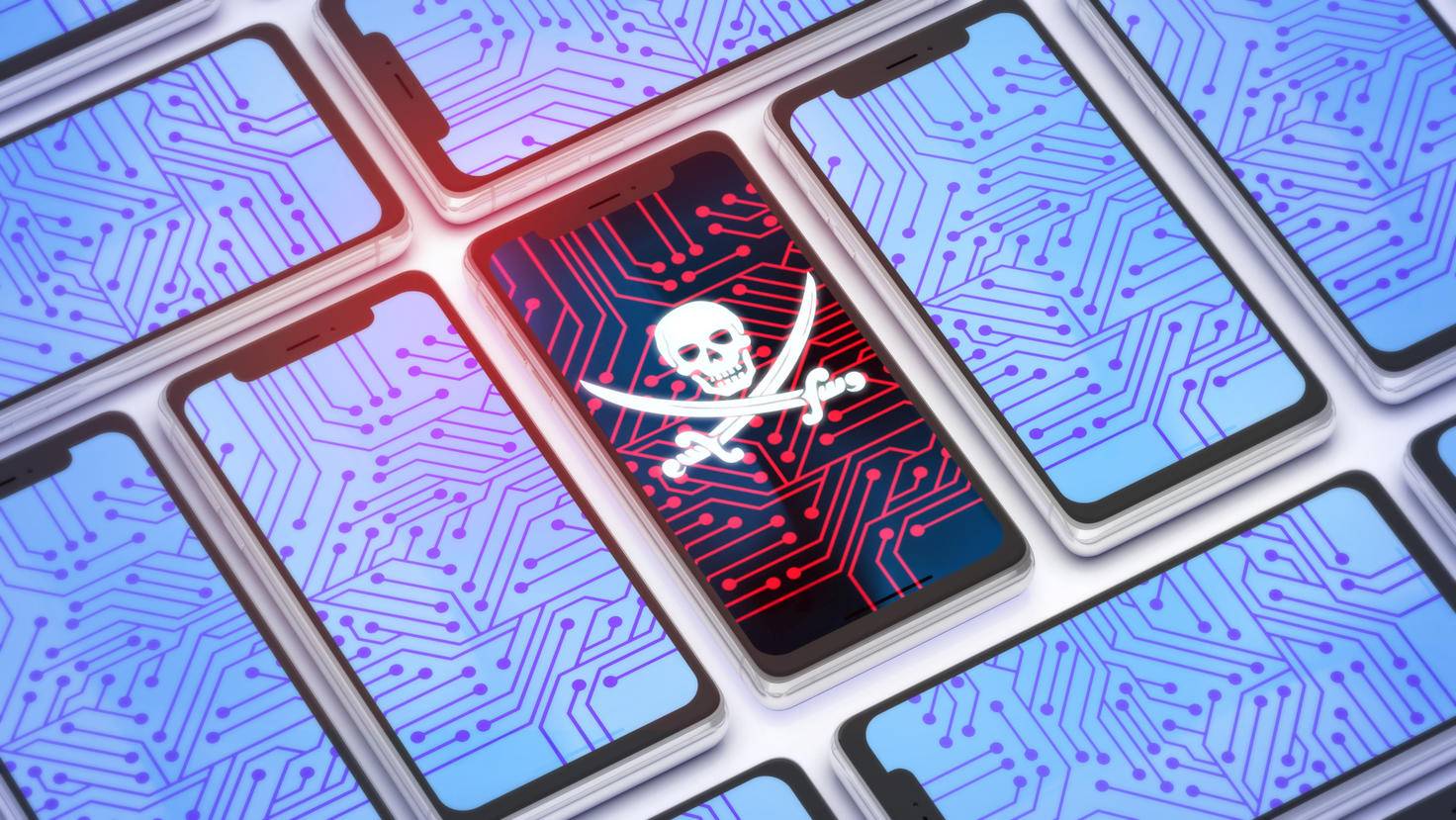Spyware on the cell phone: How to recognize and remove spy software

Nobody wants so-called spyware on their smartphone, because criminals use the malware to spy on their victims. We’ll tell you how to recognize spyware and, above all, how to get rid of it.
By Sebastian Weber
Viruses and spyware have always been a problem on the PC, so Windows has long had protection built in. Smartphones are now also popular targets for criminals, as they have become an integral part of our everyday lives. But how do you recognize on iOS and Android that your device is infected with spyware? And what can you do about it?
Spyware on the cell phone – these are the signs
There are a few signs to check whether there is spyware on your smartphone:
- Your smartphone shows you strange or inexplicable messages and push notifications.
- Your home screen has new apps or the icons of familiar apps look unusual.
- The battery of your smartphone suddenly lasts much shorter.
- The data consumption of your smartphone is suddenly much higher.
- Your smartphone keeps reaching its performance limits or gets inexplicably warm.
If you notice some of these changes without being able to explain them, these are indications that you may have spyware on your smartphone. We will now explain how to proceed for both iOS and Android.
Detect and remove spyware on iOS
The steps and tips below should help you identify and remove spyware from your iPhone or iPad. You can go through them step by step. If you have already carried out some of the measures, you can also try out individual tips for yourself:
- First check if there is an update for iOS. The update may close the security hole(s) exploited by the spyware. To do this, open the settings and select “General > Software update”.
- Open the App Store and click on your profile. Select “Purchased > My Purchases”. All apps are displayed, whether free or paid, that are installed on your iOS device and have ever been installed. Keep your eyes open to see if you notice any unknown apps. If in doubt, you can use a Google search to find out whether the unknown app is dangerous software. If your suspicion is confirmed, you should definitely delete the app.
- In your device’s settings, look for the “Privacy” sub-item and then the “Location Services” menu item. Here the device lists all apps that record your location. Check again if programs seem strange to you. As before: Anything that seems strange to you should be deleted.
- Go to the Safari browser to clear your history and set cookies. To do this, create a new tab and then click on the icon at the bottom that looks like an open book. It opens the browser history, where you can see the “Delete” item at the bottom right corner. Clicking on it lets you choose how much of the history to remove. If you have or suspect you have spyware, you should delete everything.
- In the worst case, the only thing that will help is to reset your iPhone or iPad to the factory settings and thus put an end to spyware. You can find this option under “Settings > General > Reset”. But back up your personal data such as photos beforehand so that you don’t lose everything.
Android: How to remove spyware

Android users should be particularly wary of spyware.
Image: © Adobe Stock/Marcos Silva 2019
Android users also have to deal with spyware. They are even the more popular target for espionage due to the more open operating system. If you suspect that your Android smartphone is infected with spyware, follow these steps:
- Start your Android smartphone in safe mode. In this mode, only the pre-installed apps of the smartphone are loaded. Like you in the Safe mode differs by manufacturer. Instructions can be found on the manufacturer’s support websites. Alternatively, a Google search for “[Hersteller] safe mode” good instructions.
- As soon as your smartphone is in safe mode, open the settings and select the sub-item “Apps”. Now go through the list of programs and delete any that seem strange or unfamiliar to you. but caution: Android also shows you system applications here, which you usually recognize by the designation Android or Google. You should not remove these.
- Pay particular attention to apps that have unauthorized administrator permissions or those that can change system settings. If you are not sure whether an app is a system application or spyware, search Google for the app name – preferably in combination with the manufacturer of your smartphone. Example: “Xiaomi Joyose”.
- Restart your device in regular mode and see if your phone continues to behave strangely.
If that didn’t help, the last step is to factory reset your device. However, back up important data such as photos beforehand.
Then open the settings of the device and look for the sub-item “System > Reset options”. Select “Erase All Data” and follow the instructions.
That way, spyware doesn’t get onto your smartphone in the first place

By following a few simple rules, you can minimize the risk of spyware infection.
Image: © Drobot Dean/Adobe Stock 2019
Spyware poses a serious threat to smartphone users, as personal and sensitive information can fall into the hands of third parties and be misused for criminal purposes. Fortunately, spyware can rarely be installed directly on smartphones.
Spyware is often unknowingly downloaded and installed by users themselves. With the following tips you can reduce the risk of getting infected with spyware to a minimum:
- Always download apps from the App Store (iOS) or Play Store (Android). If an app is suddenly automatically downloaded while surfing with the smartphone and an installation screen opens, then definitely cancel the process immediately. Then delete the downloaded installation file of the app (APK file) from the download directory and do not visit the respective website again.
- Only open links and attachments from emails and messengers from contacts you know.
- Only let trusted people use your smartphone. caution: Children are not concerned about surfing the Internet with their smartphones and are unaware of the dangers of spyware and viruses. Therefore, keep an eye on younger children in particular when you let them use your smartphone.
- If an app suddenly asks for a permission that it doesn’t actually need, you should be vigilant. You may already be infected with spyware. To be on the safe side, reject the authorization request. If it’s an app you don’t know, search Google for the app’s name. Other users often had doubts and can assess whether the app is dangerous.
- Security apps can provide additional protection against spyware and malware, and can remove some (but not all) of these malicious apps. Well-known manufacturers of such protection software include AVG (iOS | Android) and Avast (iOS | Android)
summary
- High data volume consumption, low performance and other signs point to spyware.
- Identifying spyware is difficult. If you suspect a spyware infection, you should look out for applications that you do not recognize in the list of all installed apps.
- To be on the safe side, do a Google search to see whether the unknown apps are harmless system applications or possible spyware. If the search results confirm the suspicion of spyware, delete the apps.
- Security apps can help detect spyware or protect your device from an infestation.
- If other measures do not work, only a reset to the factory settings will help. You should back up all important data beforehand.
Reference-www.turn-on.de
